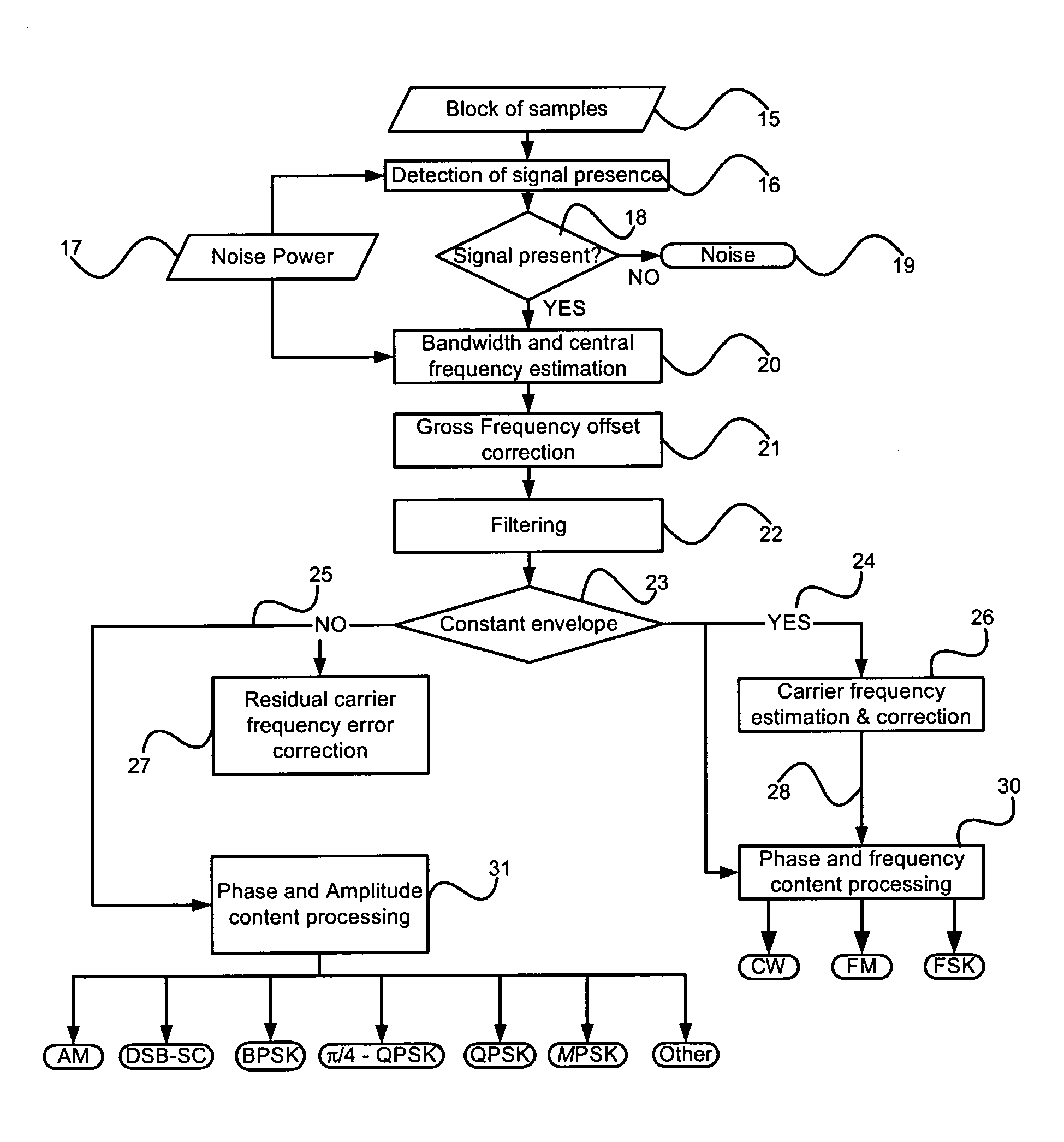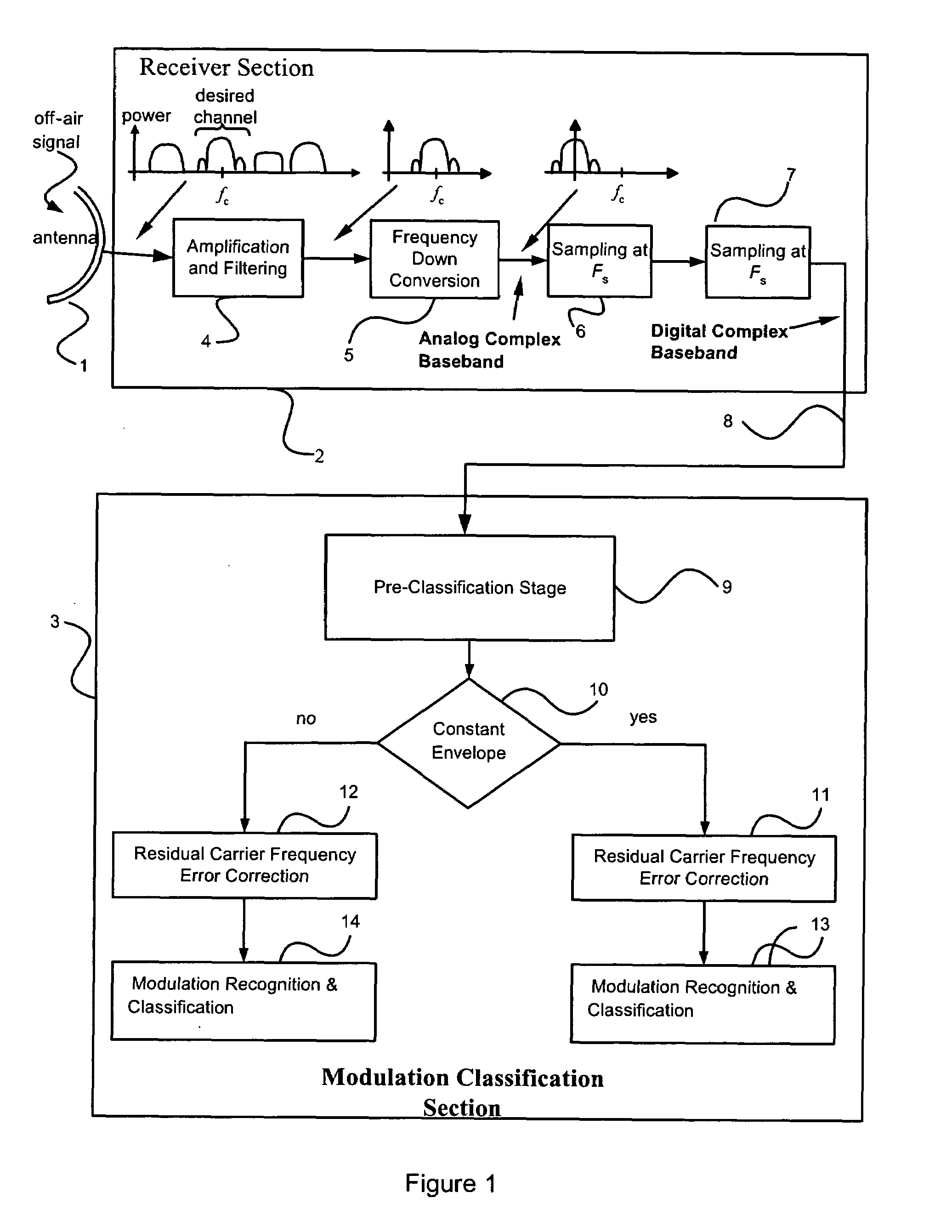Method and system for detecting and classifying the modulation of unknown analog and digital telecommunications signals
a technology of analog and digital telecommunications signals and classification methods, applied in the field of telecommunications, can solve the problems of limited digital phase modulation schemes, limited prior art approaches to off-line operation of stored signals, and difficulty in indentifying the set of meaningful signals
- Summary
- Abstract
- Description
- Claims
- Application Information
AI Technical Summary
Benefits of technology
Problems solved by technology
Method used
Image
Examples
Embodiment Construction
Glossary of Acronyms
[0062]For convenience, a glossary of acronyms used in the description of the present invention is given below:
[0063]
AMAmplitude ModulationAMPSAdvanced Mobile Phone ServicesASKAmplitude Shift KeyingAWGNAdditive White Gaussian NoiseBPSKBinary Phase Shift KeyingBTProduct of a filter bandwidth B and the symbal period TBWBandwidthCWContinuous WaveDSBDouble SidebandDSB-SCDouble Sideband Suppressed CarrierFFTFast Fourier TransformFSKFrequency Shift KeyingFMFrequency ModulationGMSKGaussian Minimum Shift KeyingGSMGlobal System for Mobile (Pan European Digital Cellular)IS-54Interim Standard #54 of the Telecommunications IndustryAssociation (also known as US Digital Cellular)MPSKM-ary PSKMUXMulti-Channel or MultiplexingPSDPower Spectral DensityPSKPhase Shift KeyingQAMQuadrature Amplitude ModulationQPSKQuarternary Phase Shift Keyingπ / 4-QPSKπ / 4-shifted Quaternary Phase Shift KeyingRMSRoot Mean SquareSNRSignal to Noise RatioSSBSingle Side BandVCOVoltage Control OscillatorVSBVe...
PUM
 Login to View More
Login to View More Abstract
Description
Claims
Application Information
 Login to View More
Login to View More - R&D
- Intellectual Property
- Life Sciences
- Materials
- Tech Scout
- Unparalleled Data Quality
- Higher Quality Content
- 60% Fewer Hallucinations
Browse by: Latest US Patents, China's latest patents, Technical Efficacy Thesaurus, Application Domain, Technology Topic, Popular Technical Reports.
© 2025 PatSnap. All rights reserved.Legal|Privacy policy|Modern Slavery Act Transparency Statement|Sitemap|About US| Contact US: help@patsnap.com



